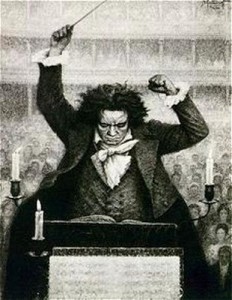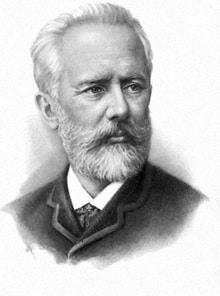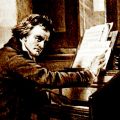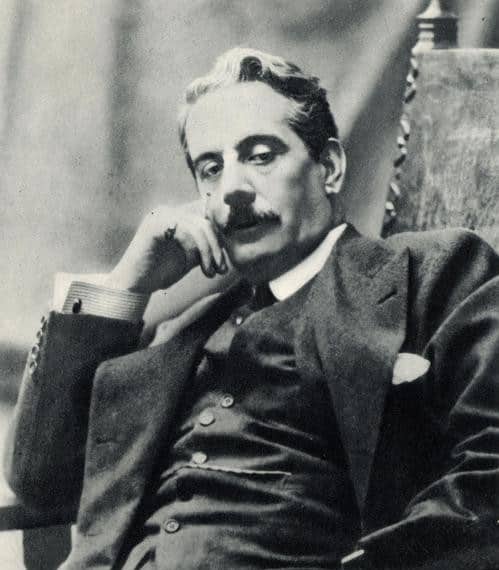Beethoven’s Violin Concerto
The only published violin concerto written by Beethoven, this piece says all that can be said by the violin and the orchestra, so what’s the need for more than one? The concerto was written in 1806 and premiered in Vienna on December 23rd of the same year, being dedicated to a skilled violinist of the time, Franz Clement. Although it was not well received, the performance by Clement himself had an interesting twist. It is said that Clement was not given time to rehearse before the premiere because Beethoven took so long to finish the solo violin part, leaving Clement to have to sight-read some portions. To make up for this, between the first and second movements he played one of his own violin pieces on one string while holding the violin upside down.
 I would personally recommend the recording with Pinchas Zukerman and the Chicago Symphony Orchestra lead by Daniel Barenboim. This performance uses the cadenza written by Fritz Kreisler – and Zukerman’s violin “Dushkin”, a Guarnerius del Gesù of 1742 does the music perfectly. Being in the typical concerto format, it is in three movements. The first movement is marked “Allegro ma non troppo”, or “Quickly, but not too much”. It opens with four notes played by the timpani, a motive that appears throughout the movement. Those notes lead into a delicate opening to a majestic first thematic group, played by the orchestra alone at first, as the violin sits out. The first section of the theme is pastoral, as is the bulk of the movement, moving into a minor, more serious tone. After the first exposition of the theme by the orchestra the violin enters, with virtuosic ornaments and elaboration on the original idea. A favorite section of mine is after the violin’s take on the opening theme. The orchestra returns alone for some transitional material that signifies the end of the second repetition of the theme which leads into what would seem like a third, but reveals a majestic rendition of the main theme in the minor. The movement itself in the recording being touched on is about 25 minutes long, and takes the listener through innumerable emotional thresholds. The first movement comes to a close with a somber re-visitation to the principal theme, quietly and sweetly, with the violin ornamenting once again, leading into an ascending run that grows in tempo ever so slightly and volume greatly that ends with a perfect cadence. No huge coda or complex ending, just all that’s needed. The second movement is marked “Larghetto”, which denotes playing slowly, but not as slow as “Largo”. It opens with four notes once again, but this time not the same note, instead jumping right into the theme building. This movement is the most pastoral, and reminds one of the summer, a warm breeze while sitting in the woods in complete relaxation. The four notes in the opening reappear once again as something of an ostinato. The violin really sings in this movement, with such precision, but as if alone with no one around to make it hold back. Taking the listener on a relaxing voyage, the movement closes as the first, revisiting the main theme, but this time after nearly lulling the listener to sleep, the orchestra explodes with fiery passion for a few bars, paving the way for the violin. The violin returns, not as somber, but as pompous and majestic, leading into the dominant held in anticipation of the next movement. The third opens with the violin alone, playing what I think to be one of the most classical sounding themes ever written. This movement is grand and stately, with the violin really living up to its potential and the orchestra in total support. Again the form takes the listener to a supposed repetition of the main theme, but instead gives a line cliché, leading into a minor section that appears only once in the piece, with material that is completely different from anything else heard, it is one of the most beautiful interludes I’ve ever heard. And just as quickly as it appears, it’s gone, and back comes the main, Classical theme. This time, the movement closes with a coda, preceded by the ostinato as an introduction. It places the violin up high with zooming scales and arpeggios, but without neglecting the orchestral answer-back. Once the racing ends the first few notes of the main theme return, only to end with a perfect cadence instead of developing.
I would personally recommend the recording with Pinchas Zukerman and the Chicago Symphony Orchestra lead by Daniel Barenboim. This performance uses the cadenza written by Fritz Kreisler – and Zukerman’s violin “Dushkin”, a Guarnerius del Gesù of 1742 does the music perfectly. Being in the typical concerto format, it is in three movements. The first movement is marked “Allegro ma non troppo”, or “Quickly, but not too much”. It opens with four notes played by the timpani, a motive that appears throughout the movement. Those notes lead into a delicate opening to a majestic first thematic group, played by the orchestra alone at first, as the violin sits out. The first section of the theme is pastoral, as is the bulk of the movement, moving into a minor, more serious tone. After the first exposition of the theme by the orchestra the violin enters, with virtuosic ornaments and elaboration on the original idea. A favorite section of mine is after the violin’s take on the opening theme. The orchestra returns alone for some transitional material that signifies the end of the second repetition of the theme which leads into what would seem like a third, but reveals a majestic rendition of the main theme in the minor. The movement itself in the recording being touched on is about 25 minutes long, and takes the listener through innumerable emotional thresholds. The first movement comes to a close with a somber re-visitation to the principal theme, quietly and sweetly, with the violin ornamenting once again, leading into an ascending run that grows in tempo ever so slightly and volume greatly that ends with a perfect cadence. No huge coda or complex ending, just all that’s needed. The second movement is marked “Larghetto”, which denotes playing slowly, but not as slow as “Largo”. It opens with four notes once again, but this time not the same note, instead jumping right into the theme building. This movement is the most pastoral, and reminds one of the summer, a warm breeze while sitting in the woods in complete relaxation. The four notes in the opening reappear once again as something of an ostinato. The violin really sings in this movement, with such precision, but as if alone with no one around to make it hold back. Taking the listener on a relaxing voyage, the movement closes as the first, revisiting the main theme, but this time after nearly lulling the listener to sleep, the orchestra explodes with fiery passion for a few bars, paving the way for the violin. The violin returns, not as somber, but as pompous and majestic, leading into the dominant held in anticipation of the next movement. The third opens with the violin alone, playing what I think to be one of the most classical sounding themes ever written. This movement is grand and stately, with the violin really living up to its potential and the orchestra in total support. Again the form takes the listener to a supposed repetition of the main theme, but instead gives a line cliché, leading into a minor section that appears only once in the piece, with material that is completely different from anything else heard, it is one of the most beautiful interludes I’ve ever heard. And just as quickly as it appears, it’s gone, and back comes the main, Classical theme. This time, the movement closes with a coda, preceded by the ostinato as an introduction. It places the violin up high with zooming scales and arpeggios, but without neglecting the orchestral answer-back. Once the racing ends the first few notes of the main theme return, only to end with a perfect cadence instead of developing.
Beethoven’s Violin Concerto is truly one of the finest pieces of music ever written, in my opinion. I think the casual listener would best appreciate it for the fact that it’s in three movements, and the first movement is a bit long, as some less interested listeners might get bored during the slow sections. But if you want to be taken on an emotional ride without leaving the realm of relaxation, I highly recommend this piece.




